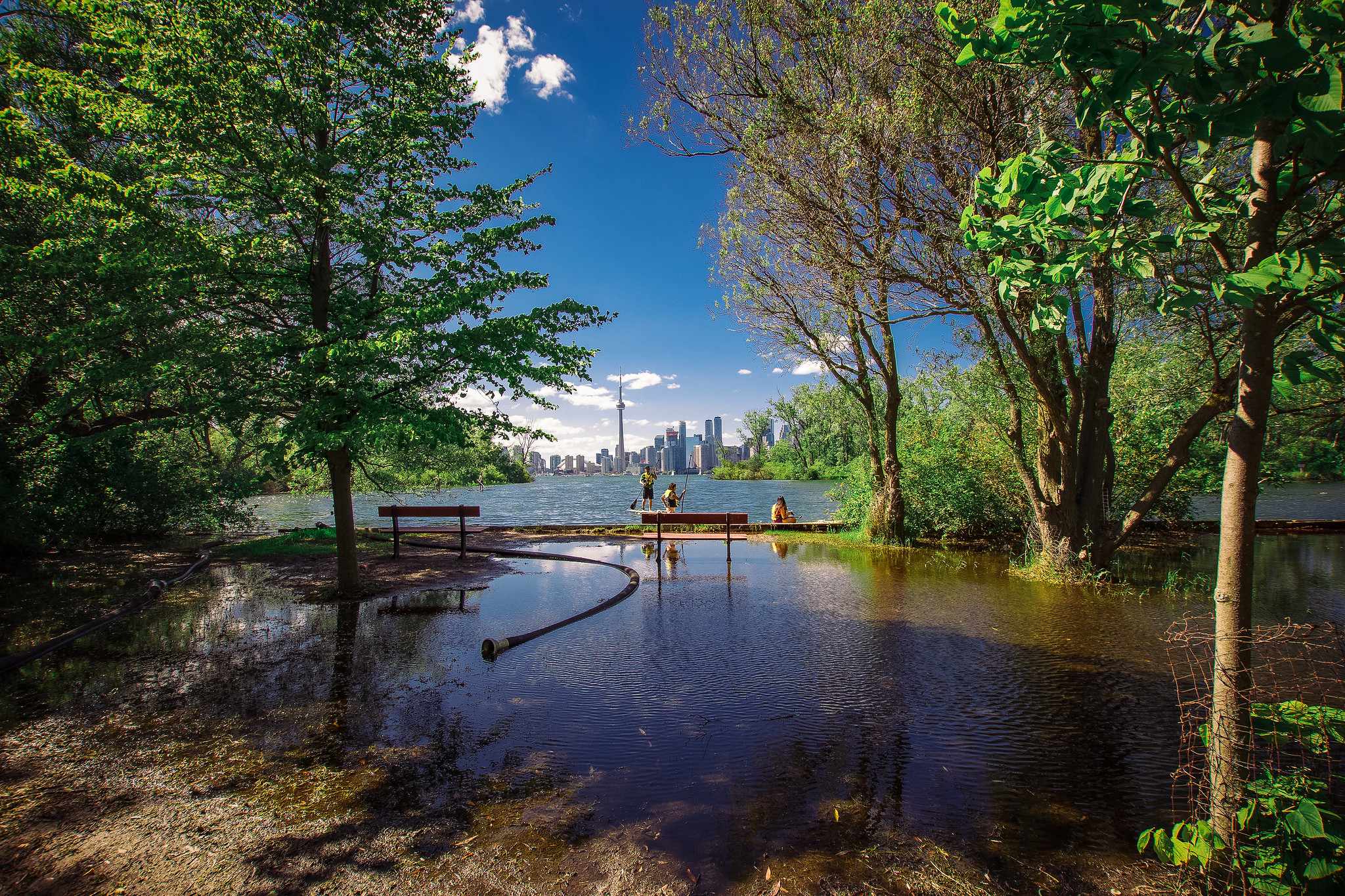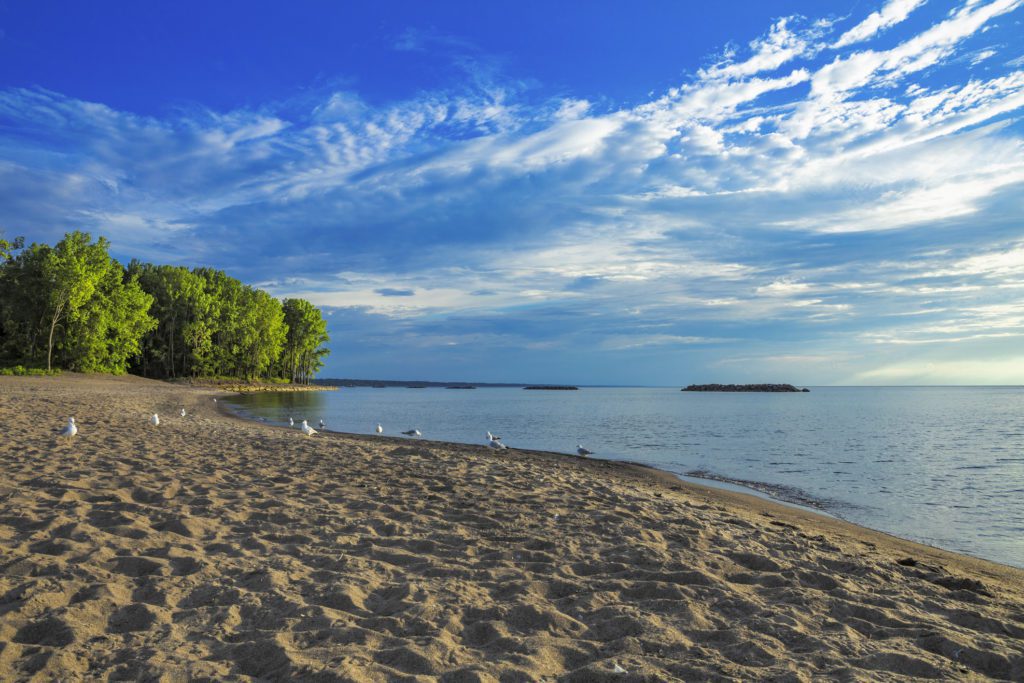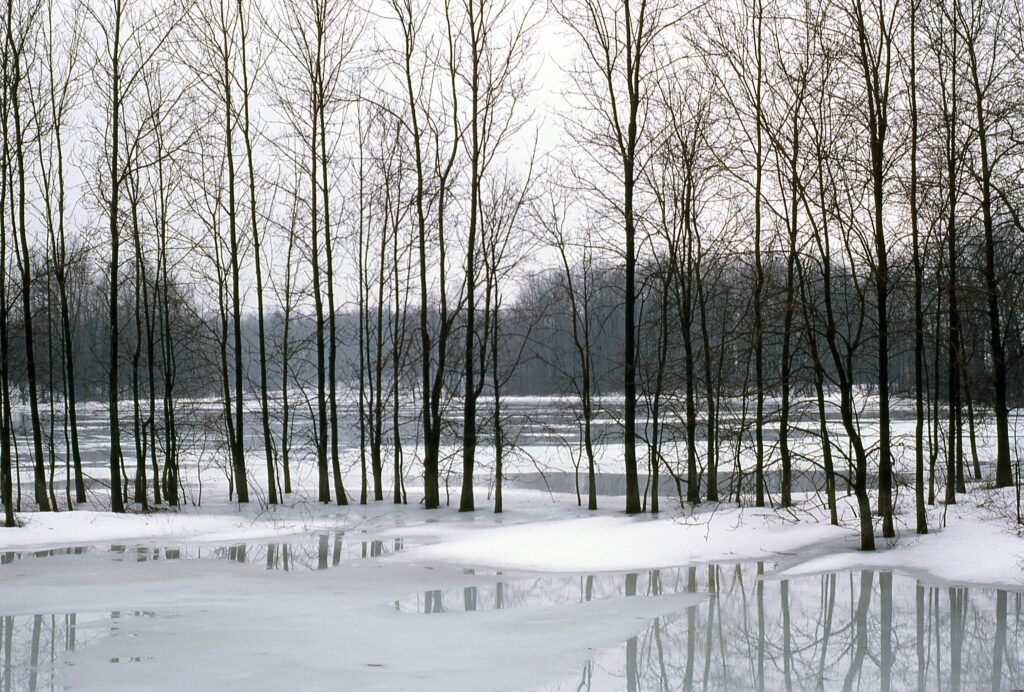As communities grapple with the COVID-19 crisis, there is another looming threat around the Great Lakes region: high water and spring flooding.
In 2017 and 2019, lake levels across the Great Lakes reached record highs and caused major flooding and damage. In 2017 an all-time record high was set for Lake Ontario. That record was quickly broken only two years later in 2019. Last year records were set across the Great Lakes region, and shoreline communities have hardly begun to recover from the damage.
Erie Shore Drive right now. Much of the road is dry, but this is a problematic spot on this stretch. Obviously with the road closed to all but local traffic, I hoofed it up to this area. #ckont pic.twitter.com/pAok0PzOyU
— Trevor Terfloth (@DailyNewsTT) April 13, 2020
More flooding expected in Great Lakes communities this year
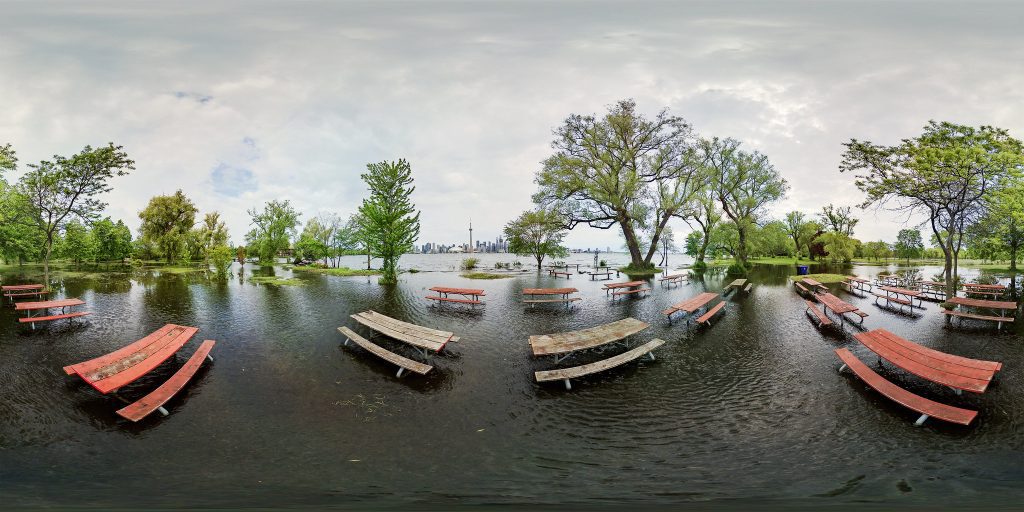
The outlook for 2020 is no better, as all five Great Lakes are currently experiencing high water levels well above average. With the lake levels so high, even moderate winds can cause storm surges for shoreline communities. On Monday April 13, there was a major storm event that caused wave action on Lake Erie up to 17 feet high!
High winds in the forecast for Monday were less than expected, but that didn’t prevent major flooding in Norfolk County’s lakeshore areas. https://t.co/HGdeT8ucJC pic.twitter.com/64aJ0M1F2B
— The Simcoe Reformer (@Simcoe_Reformer) April 14, 2020
This storm activity on and near Lake Erie has caused a flooding watch in Norfolk county and shoreline communities are likely already facing serious damages. This is no doubt a source of major stress for families already dealing with the COVID-19 crisis. COVID-19 will no doubt add another level of complication to any potential evacuations or sandbagging activities that need to occur.
Unfortunately, impacts from the recent storm are likely the first of many flooding events across the Great Lakes region this year. All the lakes are above their average level for this time of year and some are poised to set records later this spring. The Great Lakes function as one system, where high water in one lake can cause downstream flooding in others. Part 2 of this series has more information on how this works, and how climate change is putting increasing pressure on the system.
The floods will be coming at the worst possible time as communities are grappling with the financial and societal stresses of the COVID-19 pandemic. This serves as a stark reminder that while we may be rightfully distracted and consumed by COVID news, we must continue to fight climate change and protect the environment.
Protecting the Great Lakes could help restore our economy post COVID-19
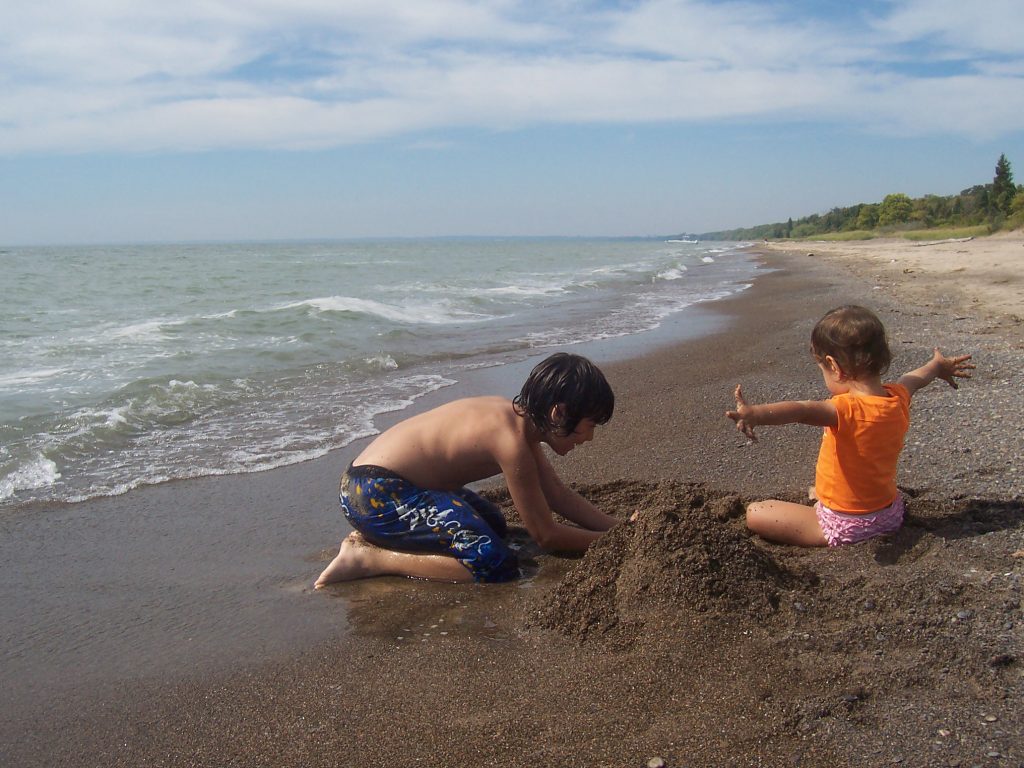
As we look to the future post-COVID, there could be opportunities for our economic recovery to make us more resilient to climate change and flooding events in the Great Lakes. We know governments will have to invest in projects to create jobs and stimulate the economy. What if those projects make us more resilient to climate change and flooding? What if those projects, in addition to creating jobs, and restoring ecosystems and shoreline communities?
There’s evidence that investing in restoring the Great Lakes can stimulate the local economy and support new jobs. In the United States, the Great Lakes Restoration Initiative has created thousands of jobs and pays huge dividends in the tourism and recreation economy. Here at home, investments in the Randle Reef restoration project in Hamilton Harbour have also contributed to a boost in the economy.
What could be some resilience-building recovery projects?
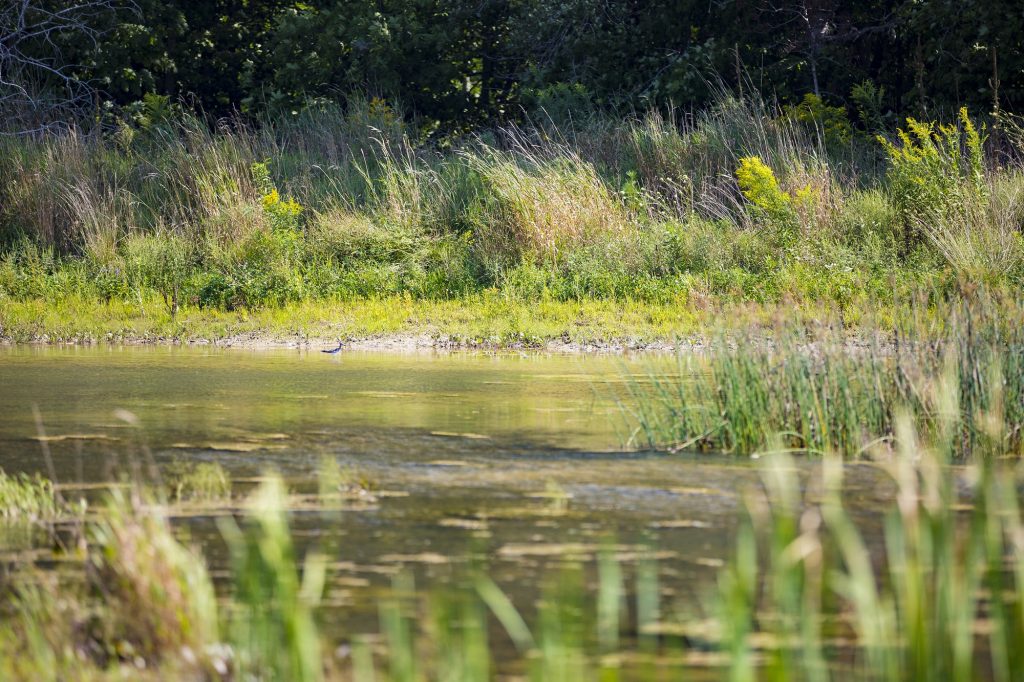
Resilience-building recovery projects could look like several different things. In some areas, it could mean creating more wetlands and protecting and restoring the ones we have. Wetlands absorb floodwaters and can act like sponges in our watersheds. In other areas, it could look like massive infrastructure projects like wastewater treatment upgrades or shoreline “naturalization” work. This means making the shoreline closer to its natural state and removing buildings and structures from floodplains.
In any case, it is so vital that we find a way to pair economic stimulus spending with environmental benefits. Not only does it just make good sense, but these types of projects will also help us be better prepared for the next crisis. As Part 1 and Part 2 of this series collectively show, Great Lakes communities are already facing impacts from climate change. Our actions and investments will determine how we will “weather the storm” as fluctuations in water levels are sure to continue to impact our cities and communities.
Read Part 2: How impacts from climate change make Great Lakes communities vulnerable
If you are able, we hope you will consider making a donation to help us continue our work in protecting our environment and the health of your family and friends.




